View Streetcars of Japan in a larger map
Japan’s streetcar system was once immense and extremely popular. In 1903 the first electric streetcar hit the road. And in Tokyo alone, a vast system of 41 routes once stretching over 130 miles carried people all over the burgeoning city. But with the onset of automobiles, streetcars began to be seen as a contributor to traffic and lines began to shut down. Currently, there are only 19 lines in all of Japan (and only 2 in Tokyo) that make up less than 1% of the country’s vast railroad system.
However, that doesn’t mean that streetcars are on a track to existence. In fact, there is something inherently adorable and nostalgic in seeing small streetcars chug through the city. And if you’ve never been on the two in Tokyo – Toden Arakawa Line and Tokyu Setagaya Line – I highly recommend it. It’s a great way to see lots of Tokyo that you would have missed.
A Savior of Urban Transportation
Many believe that streetcars have the potential to address some of the urban transportation problems that plague our cities. Here are some of them:
- Eco-friendly: streetcars run on electricity and are cleaner than cars and buses
- Easy Access: It’s especially nice for an aging society like Japan because you don’t have to climb up or down stairs to get to the stations.
- Affordable: a pass is typically no more than 160 yen.
- Tourist-friendly: streetcar tracks are easy (and cheap) to lay so the routes typically pass near tourist sites and landmarks. And because they move relatively slow, it’s a great way to get to know a new town.
If you want to explore the last remaining streetcars of Japan, I’ve created a map, pinpointing where each tram runs. Here is a small selection of some of my favorite streetcars:
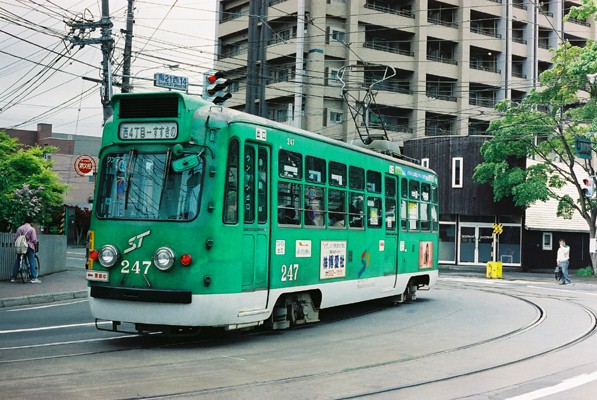 all images courtesy wikimedia commons | click to enlarge | The Sapporo Streetcar – this northernmost streetcar of Japan runs between Nishi 4-chome and Susuki.
all images courtesy wikimedia commons | click to enlarge | The Sapporo Streetcar – this northernmost streetcar of Japan runs between Nishi 4-chome and Susuki.
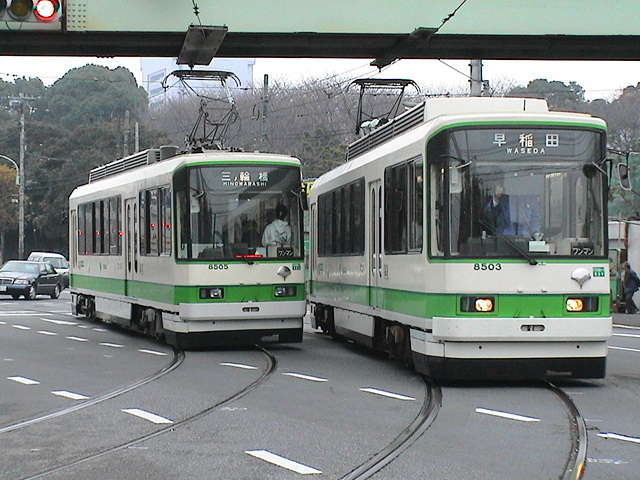 One of the only two streetcars that runs through Tokyo, the Toden Arakawa line connects 30 stations from Minowabashi to Waseda.
One of the only two streetcars that runs through Tokyo, the Toden Arakawa line connects 30 stations from Minowabashi to Waseda.
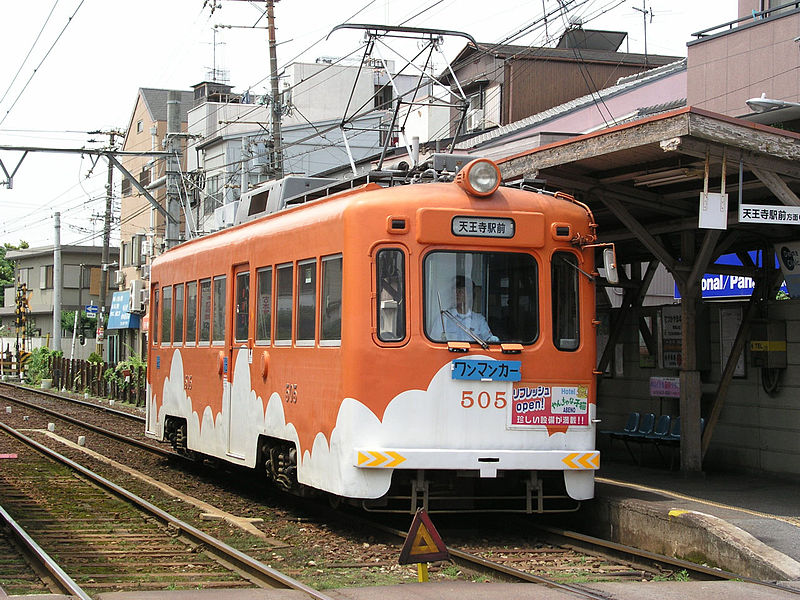 The Hankai Tram (known as chin-den by locals) runs through Osaka City.
The Hankai Tram (known as chin-den by locals) runs through Osaka City.
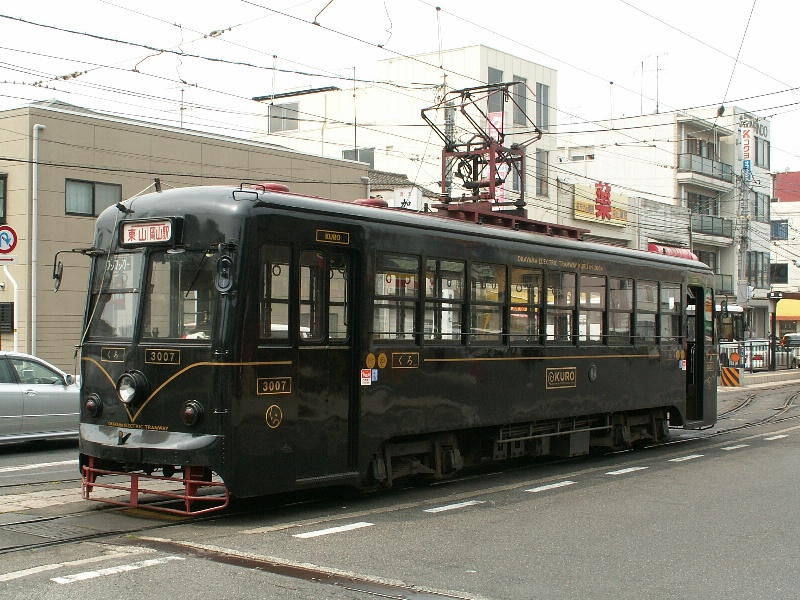 The Okayama Electric Tram features cars like KURO, designed by famed train designer Eiji Mitooka.
The Okayama Electric Tram features cars like KURO, designed by famed train designer Eiji Mitooka.
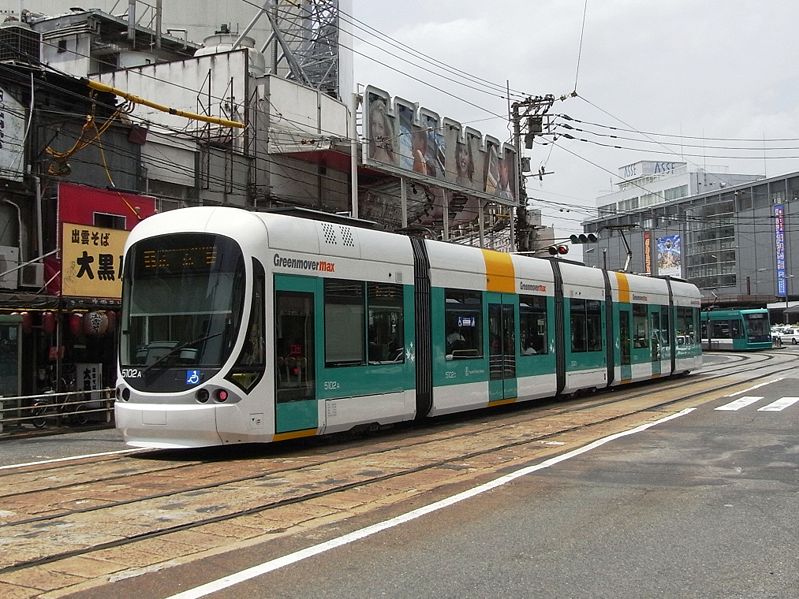 The Hiroshima Electric Railway (Hiroden) services roughly 11,000 people per day. And with 6 streetcar lines with eight routes, it’s not only the busiest but also the longest streetcar service in Japan.
The Hiroshima Electric Railway (Hiroden) services roughly 11,000 people per day. And with 6 streetcar lines with eight routes, it’s not only the busiest but also the longest streetcar service in Japan.
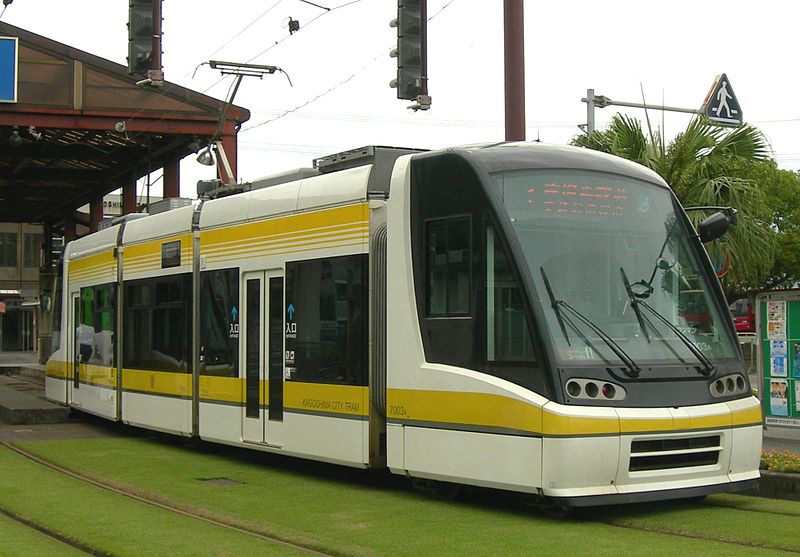 With more than 10 million annual riders, Kagoshima City Tram is one of the few profitable tram lines in Japan.
With more than 10 million annual riders, Kagoshima City Tram is one of the few profitable tram lines in Japan.
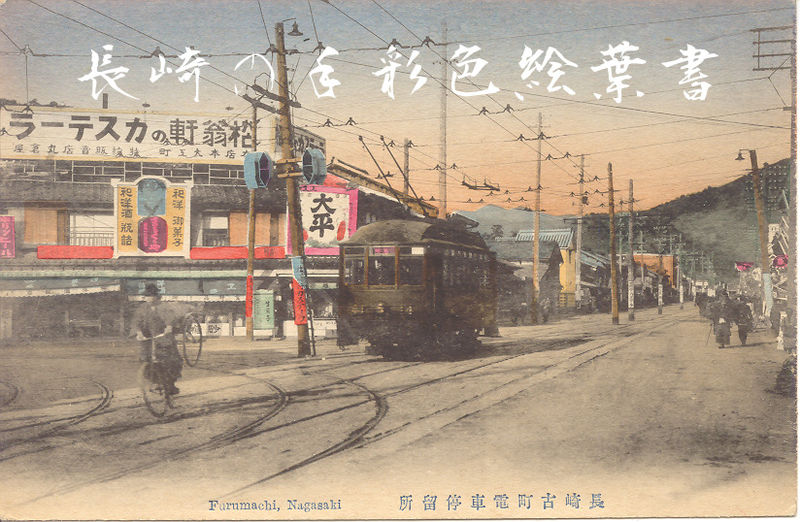 An old postcard of the Nagasaki Electric Tram
An old postcard of the Nagasaki Electric Tram
A Streetcar Renaissance?
There are currently plans to build a new streetcar in one of the more unlikely of places – the high-end district of Ginza. However, it would be more of a reinstatement than a new build. Fo almost 100 years Ginza’s economy was supported by streetcars. The original horse-drawn streetcars started operations in 1882 and connected Shinbashi with Asakusa. In 1903 they were electrified, and eventually shut down in 1967.
But inspired by Hiroshima’s effective streetcars that continue to operate today, plans are now underway to construct a 2.8 km street rail that would connect Ginza with Tokyo’s Harumi District by as early as 2018.
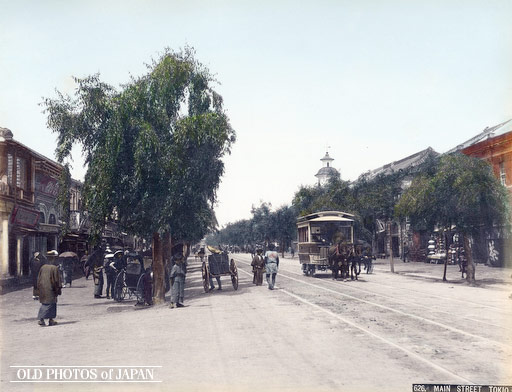 An open, relaxed Ginza and horse-drawn Ginza streetcar captured by photographer Kimbei Kusakabe (1841-1934). The small clock tower rising above the trees is now the Ginza Sanwa Building, and right next to that is Matsuya Department Store. Photo via
An open, relaxed Ginza and horse-drawn Ginza streetcar captured by photographer Kimbei Kusakabe (1841-1934). The small clock tower rising above the trees is now the Ginza Sanwa Building, and right next to that is Matsuya Department Store. Photo via
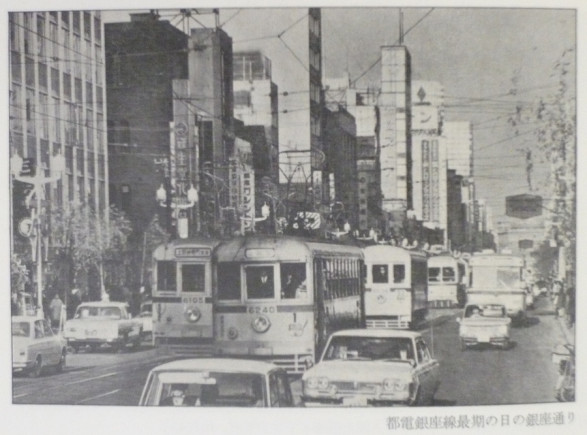 Ginza-dori in 1967 on the final day of the Toden streetcars. Photo via
Ginza-dori in 1967 on the final day of the Toden streetcars. Photo via
This post is part of week-long series on trains in Japan. The complete series can be found here.


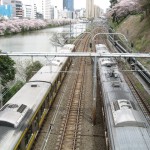





















August 14, 2013 at 3:34 am
When I visited Kumamoto in 2009, they still had very nice old cars in operation. Felt a bit like lisboa.